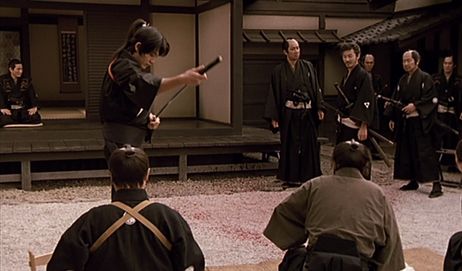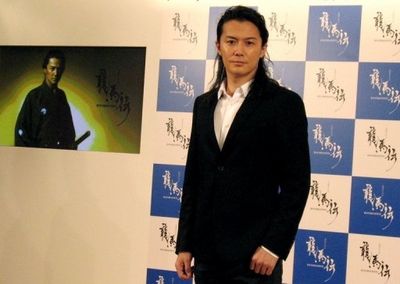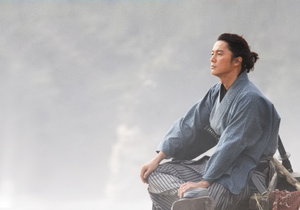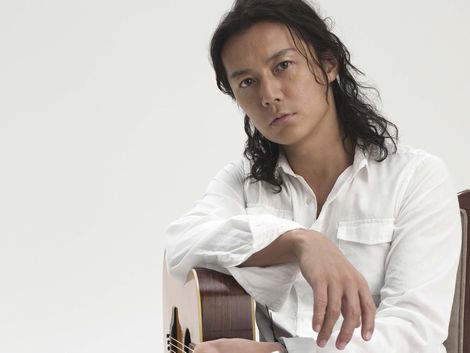A curious thing happened to me the other day on my way to kendo class. One of the friendly Japanese moms ran into me in the hallway and said to me: “Oooooh, wow, you look like Sakamoto Ryoma.” I gave her a quizzical look, not of scorn but of surprise and curiosity. She noticed my confusion and then added, “You look cool!”
I thanked her for her compliment and went on my merry way. But I couldn’t stop thinking about that incident all through kendo class. Why had she said that? What did she mean? And who is Sakamoto Ryoma? My curiosity was piqued now and I had to find out.
Later, I ran into her again and this time, I was determined to find out what she meant. I hate not knowing something, so I politely asked her why she thought I looked like Sakamoto Ryoma. She replied, “It’s your chonmage.”
Chonmage*? Chonmage? What’s a chonmage?
( * pronounced “chon-ma-gei”)
“Chonmage?” I asked.
“Yes, chonmage.” And perceptive woman that she was, she translated. “Your ponytail.”
My chonmage
Okay. Now I understand.To explain to everyone, I have been growing my hair long for the past year and a half, to the point now where I can just get it into a ponytail. And for dojo practice, I sometimes put it up in a ponytail to get it out of my face. Of course, there are various styles of ponytails for men with long hair. But in the spirit of things, I chose to try a Japanese style, very much akin to the old samurai topknot of sorts. So no wonder I got the compliment.
Anyway, chonmage means topknot. But recently, the interpretation of the topknot has been more stylish in samurai period dramas and movies. Instead of the strict Edo style of shaved head with topknot, there has been a shift to the ponytail style of long hair.
The
ponytail style of chonmage
It is clearly seen in this movie trailer for the movie Gohatto.*
* nominated for the Palme D’Or at the Cannes Film Festival (2000). For more information, go here: Taboo (1999) (Gohatto)

A scene from Gohatto
The ponytail style has been seen before in the Kurosawa era of film-making. For example, Kyūzō, the stone-faced samurai in Seven Samurai, had a short ponytail.
Kyūzō (third samurai from the left) with short ponytail
Mifune Toshiro’s chonmage

Ryomaden
I must confess that I did not know who Sakamoto Ryoma was. But once that Japanese mom mentioned him, I became curious. I did later ask her, “Why Sakamoto Ryoma?” She responded, “Because he’s very popular now in Japan.”

Fukuyama
Masaharu (the actor who plays Sakamoto Ryoma)
Is that right? Gosh, I didn’t know that. So I went home and later on, I started to do some research on this supposedly wildly popular historical figure, which I had no previous inkling about.
What did I find? Well, here are some facts about his life and about him:
-
He was an accomplished swordsman of the Hokushin Itto Ryu style of kenjutsu.
-
He sided with an anti-Tokugawa faction which looked to resurrect the Emperor to real power.
-
He became a ronin (masterless Samurai) after the plot to overthrow the Tokugawa regime was discovered.
-
He was supposed to assassinate Katsu Kaishū, a high-ranking official in the Tokugawa government but was so impressed with Katsu’s political views of the necessity for the modernization and Westernization of Japan that he became his assistant and protégé.
-
Dubbed the “father of the Japanese Imperial Navy” because he helped to create a modern naval force.
-
Orchestrated the resignation of Tokugawa Yoshinobu in 1867, thereby effectively bringing about the start of the Meiji Restoration.
-
He drafted an Eight-Point Plan (Senchu Hassaku) for the restoration of the Emperor. This draft would serve as the blueprint for the constitutional government which would eventually be created in the Meiji Era.
Some say he was a visionary since he realized that Japan could not survive in a technologically advanced global world if she did not modernize. Once he saw Commodore Perry’s ships arrive, he knew Japan had to change or she would surely become colonized and carved up.
Some say he was the Daniel Boone of Japan: an explorer, a frontiersman, a folk hero, a pioneer. Guiding Japan from feudal isolation into the modern age.
Here are some other interesting tidbits about Ryoma:
-
Sakamoto Ryoma is so famous and highly revered in Japan that there is a museum in Kochi about him: The Sakamoto Ryoma Memorial Museum
-
Kochi Airport was renamed Kochi Ryoma Airport
-
While he was a modernist, he preferred wearing traditional Japanese dress (hakama). However, in a bizarre fashion statement, he always wore Western footwear (Western shoes and boots) with his hakama.

A statue of Sakamoto Ryoma (notice the Western shoes on his feet)
I am glad I ran into that Japanese mom. She added something new to my world. An interesting chance occurrence. Who would have thought? That’s the interesting thing about budo training: you learn something new everyday.
Sakamoto Ryoma. A strangely compelling figure. I am not a professed admirer of Meiji Era history but I do have a soft spot for black sheep and unconventional thinkers. To some, he could rightly be viewed as a traitor, a loose cannon, a turncoat. But to others, they would view him as a true patriot, a pioneer, a revolutionary.
Remember:
One man’s terrorist is another
man’s freedom fighter…
Sakamoto Ryoma. No matter which way you view him, he was a mover and a shaker.
For more excellent information about Sakamoto Ryoma, check out these sites:
-
for a great timeline on his life, see: samurai archives on Sakamoto_Ryoma
-
fantastic information about all aspects of his life: Ryoma Sakamoto
-
an article by Romulus Hillsborough available at Sword Forum International
The statue of Sakamoto Ryoma overlooking Katsurahama Beach
** If you want to watch the Ryomaden samurai period drama (jidai-geki) free online (yes, with English subtitles), go here: japanese drama ryomaden-episode list

Ryomaden, a great TV drama
The actor Fukuyama Masaharu is also a popular singer-songwriter and record producer in Japan.

Fukuyama Masaharu, the singer-songwriter
In addition, he is an accomplished photographer, having been sent by TV Asahi to cover the Sydney Olympics, hosts a radio show, and is a popular model appearing frequently in print ads. He is currently one of the hottest male artists in Japan. For more information about this unique individual, see: Masaharu Fukuyama
Mr. Tong can be contacted via email at: doug@dragonfencing.com